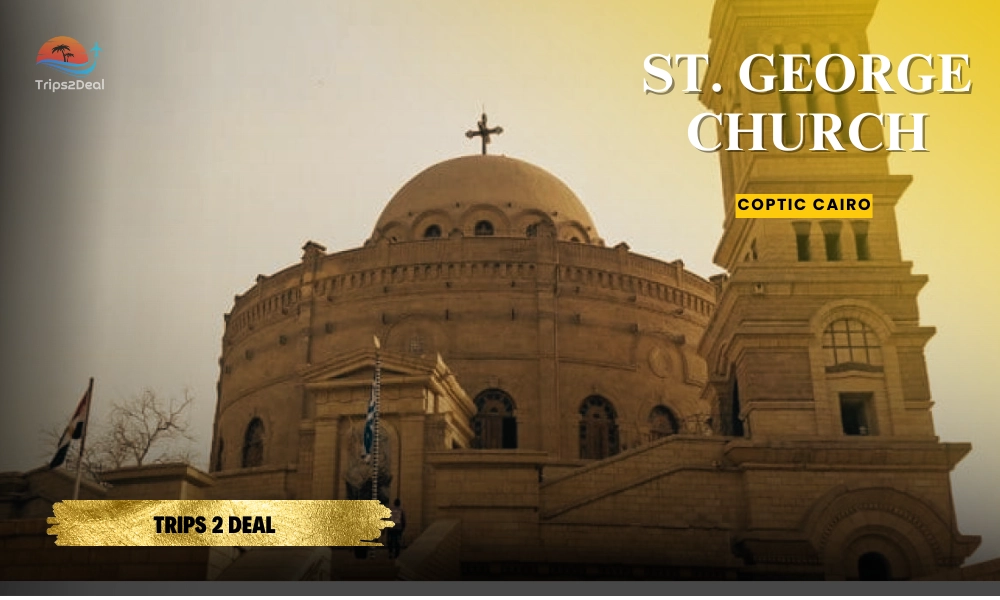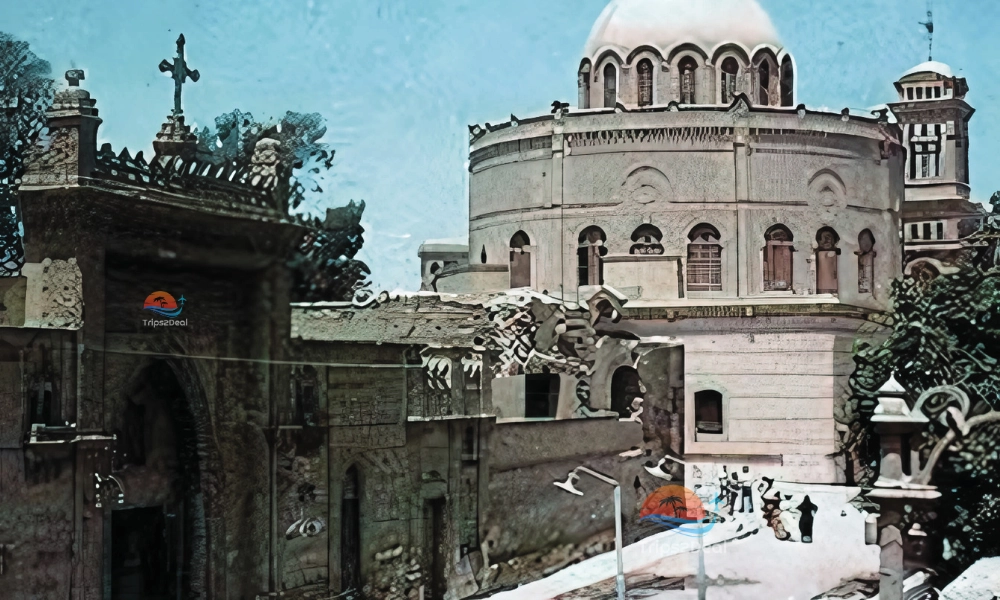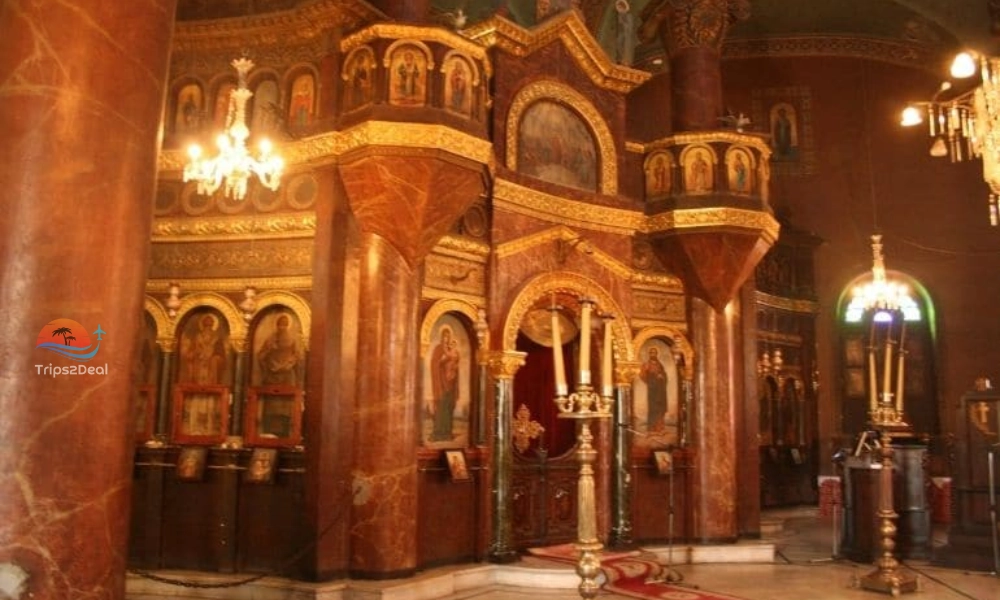Blogs

St. George Church
So I was wandering around Old Cairo last month, totally lost as usual, when I stumbled into this courtyard surrounded by ancient walls. And there it was — this weird round church that looked nothing like anything I'd ever seen before. Turns out it's St. George Church, and man, does this place have stories.
The thing is, most churches in Egypt are either long rectangles or shaped like crosses. But this one? It's a perfect circle. Like someone took a regular church and redesigned it from scratch. The locals told me it's been here for over a thousand years, which is crazy when you think about it. That's older than most European cathedrals.
What really got me was watching all these different people coming and going - Greek Orthodox priests, Coptic families, random tourists like me, even some Muslim neighbors who seemed to know the place well. There's something about this church that just draws people in.
Table of Contents
Early History of St. George Church
The Role Church in Medieval Times
Architectural Evolution of St. George Church
Church in Times of conflict and reformation
Legends, Myths, and the Patron Saint: Who Was St. George?
Early History of St. George Church
The story starts way back in the 900s. Picture this: Cairo's completely different then, right? These Christian builders are looking for a safe spot to put their church, and they see this massive Roman fortress with thick walls and sturdy towers. "Perfect," they think, "let's build right on top of one of those towers."
Smart move, honestly. Those Roman engineers knew what they were doing. The tower they picked had been sitting there for centuries already, solid as a rock. So they built their church right on top of it, using the Roman foundation as their base. Pretty clever way to recycle ancient architecture.
Back then, Christians in Egypt weren't having an easy time. They needed places where they could worship safely, and this fortress location gave them exactly that. Word spread fast, and soon people were making pilgrimages from all over the region. Some walked for weeks just to pray here.
The funny thing is, nobody really "owned" the church at first. Copts used it, Greek Orthodox used it, probably other Christian groups too. Everyone just shared it, which is pretty amazing when you think about all the religious conflicts happening elsewhere.
The Role Church in Medieval Times
Medieval times were messy for everyone, but especially for religious minorities. The church found itself caught between different Christian communities who all had their own ideas about how things should be done. It was like having multiple families trying to run the same household.
For a few centuries, things stayed pretty flexible. The Copts would use the church for their services, then the Greek Orthodox would have theirs. Sometimes they'd even worship together, which must have been interesting given their different traditions and languages.
But by the 1400s, the Greek Orthodox Patriarch of Alexandria stepped in and took permanent control. This wasn't just church politics - it was about survival. Having a powerful patron meant better protection from government interference and more resources for maintaining the building.
Once the Greek Orthodox took over, the church became their official headquarters in Egypt. Suddenly, this little round building in Old Cairo was connected to Orthodox communities across the entire Eastern Mediterranean. Bishops would show up from places like Constantinople and Jerusalem. The church became a major player in the Orthodox world.

Architectural Evolution of St. George Church
Here's where things get really dramatic. In 1904, the whole place went up in flames. Can you imagine? Centuries of accumulated treasures, ancient manuscripts, priceless artwork - all gone in one night. The community was heartbroken.
But here's what I love about people sometimes: they didn't just sit around feeling sorry for themselves. Within months, they'd organized a massive rebuilding effort. Everyone pitched in - some gave money, others donated materials, skilled craftsmen worked for free. By 1909, they'd rebuilt the entire church.
The new version kept the original round design because, honestly, why mess with something that unique? But they added modern safety features and incorporated some contemporary architectural elements. It's like they took the best of the old and mixed it with the practical needs of the new century.
Walking around the church today, you can still see evidence of that Roman tower underneath. The massive stone blocks, the way the entrance stairs are built - it's all Roman engineering. But then you go inside and it's completely different. The space feels intimate despite being fairly large, probably because of that circular design.
The woodwork is absolutely incredible. There's this enormous door - seriously, it's almost 25 feet tall - that somehow survived the 1904 fire. The carving work is so detailed and intricate that modern craftsmen just shake their heads when they see it. How did medieval woodworkers achieve that level of precision without power tools?

Church in Times of conflict and reformation
The 1904 fire wasn't the only disaster this place survived. Over the centuries, it weathered invasions, political upheavals, economic crises, and religious tensions. Being inside a fortress helped, but it wasn't a guarantee of safety.
What strikes me most is how the community always found a way to bounce back. When the church burned down, they could have just given up and found somewhere else to worship. Instead, they saw it as an opportunity to build something even better.
The rebuilding process actually brought the community together in ways that probably hadn't happened for generations. People who'd been feuding over minor theological differences suddenly found themselves working side by side, mixing concrete and hauling building materials. Nothing brings people together quite like shared hardship and a common goal.
By the time they finished the reconstruction, they'd created something that honored their past while embracing the future. They kept the traditional round design and salvaged whatever they could from the original building, but they also added modern conveniences and safety features. It's a perfect example of how tradition and progress can work together instead of fighting each other.
Legends, Myths, and the Patron Saint: Who Was St. George?
Now let's talk about Saint George himself, because his story is wild. Everyone knows about the dragon slaying legend, but that's actually a relatively recent addition to his story. The dragon tale probably came from Western Europe around the 1300s and caught on because it perfectly captured what George represented.
The relief carving on the church's outer wall shows George on horseback, spear raised, facing down this massive dragon. It's not just decoration - it's a statement. Every time people see it, they're reminded that good can triumph over evil, that faith can overcome any obstacle.
What's interesting is that Saint George probably never actually set foot in Egypt. But his spirit certainly made the journey. The way Egyptian Christians embraced him as their own patron saint says something profound about how faith transcends geographical boundaries.
The dragon story resonates because everyone faces dragons in their own life - fear, despair, injustice, illness. George's victory over the dragon isn't just ancient history; it's a promise that those battles can be won.
UNESCO/Heritage Recognition
The church sits in the middle of what's basically an outdoor museum. Coptic Cairo is packed with Roman ruins, Byzantine churches, Islamic monuments, and even an ancient synagogue, all within a few city blocks. It's like someone compressed 2,000 years of history into a small neighborhood.
Keeping all this intact isn't easy. Cairo's climate is tough on old buildings - the heat, the dust, the occasional flooding. Plus, urban development constantly threatens historical sites. Developers see prime real estate; historians see irreplaceable cultural heritage.
But the Egyptian government and local communities have worked hard to preserve this area's unique character. The church benefits from being part of this larger preservation effort. When you're trying to maintain a thousand year old building, having supportive neighbors and government backing makes all the difference.
The preservation work isn't just about maintaining buildings; it's about keeping traditions alive. The craftsmen who restore the church's woodwork use the same techniques their ancestors used centuries ago. It's living history, not just museum pieces.
St. George Church in the Modern Day
Every April 23rd, this quiet neighborhood explodes into celebration. The annual Molid of Mari Gerges is probably the biggest Christian festival in Cairo, and it's absolutely incredible to witness. Despite the church being officially Greek Orthodox, the festival draws everyone - Copts, Orthodox Christians, curious Muslims, random tourists.
I happened to be there during one of these celebrations, and it was sensory overload in the best possible way. Music everywhere, food vendors selling everything imaginable, families picnicking in the streets, kids running around with balloons, elderly pilgrims praying intensely. It felt like the entire city had come together for one massive party.
Inside the church, there's this chain that's supposedly connected to Saint George's martyrdom. People line up for hours just to touch it, hoping for healing or blessing. Whether you believe in its miraculous properties or not, watching people's faces as they pray is deeply moving. Faith is a powerful thing, regardless of what form it takes.
The church doesn't just come alive during festivals, though. On any given day, you'll find people stopping by for quiet prayer, lighting candles, or just sitting in the peaceful circular space. It serves the same basic human needs it always has - a place to find hope, peace, and community.
Conclusion
After spending time at St. George Church, I keep thinking about what makes a place truly special. It's not just the age, though a thousand years is pretty impressive. It's not just the unique architecture, though that round design is genuinely striking. It's the fact that this place has never stopped being what it was meant to be - a gathering place for people seeking something bigger than themselves.
This church has survived everything history could throw at it. Fires, wars, political changes, economic upheavals, religious tensions - it's seen it all and kept going. More importantly, it's maintained its role as a place where people come together despite their differences.
In our modern world, where everything seems divided and polarized, there's something precious about a place where Copts and Orthodox Christians worship side by side, where tourists and pilgrims share the same space, where ancient traditions meet contemporary needs. The church's round walls have witnessed over a thousand years of human drama, and they'll probably witness a thousand more.
That's the real miracle of St. George Church - not just that it's survived, but that it continues to serve the same fundamental human needs it always has. In a complicated world, that kind of continuity is worth celebrating.





